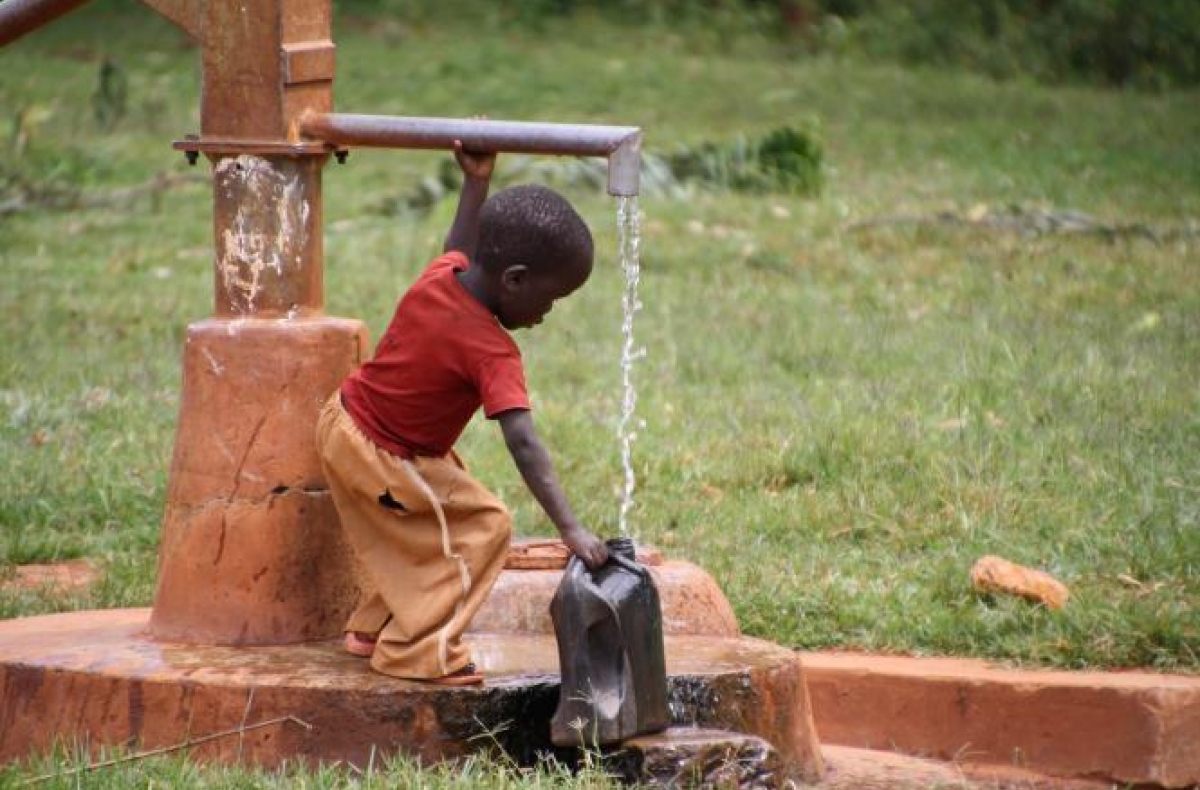Working toward reliable rural water supplies
Stanford Ph.D. candidate Daniel Smith leads a project in Uganda aimed at achieving safe, reliable water services by incentivizing water infrastructure maintenance.
March 22, 2019

Credit: Shutterstock/jennygiraffe
Within Uganda’s rural Apac District, over 700 wells with handpumps represent a key to prosperity for residents who carry heavy water jugs from the pumps to their homes. When pumps fail, family members are forced to spend hours a day finding and retrieving water often many miles from home or turn to unsafe water sources (a leading cause of death and disease in Uganda).
Daniel Smith, a Ph.D. candidate in Stanford’s Environmental Engineering Program leads WHD’s Uganda rural water project, which examines the demand and cost of handpump maintenance. Smith discussed his background in drinking water infrastructure, implementation of the Uganda project, and work toward providing universal access to water, the goal of U.N. Sustainable Development Goal 6 (SDG 6.)
What inspired you to pursue this area of work?
Smith: I worked for many years on community drinking water treatment plants in Central America. I became more and more interested in why some communities and not others decided to invest in better drinking water infrastructure in the first place, and why they kept that infrastructure operating in the long-term. It turns out that in many places it tends to be more straightforward to get things built than it is to keep them maintained. I think this maintenance puzzle is perhaps the most difficult one to overcome to achieve the goal of safe, reliable water for everyone worldwide, and in rural and lower-income areas especially.
Describe the Uganda project.
Smith: We have partnered with a nonprofit social enterprise in Uganda, International Lifeline Fund’s EverFlow program, that contracts with community water committees to regularly maintain community-owned handpumps, collects data to ensure they are operating properly, and responds to emergency handpump breakdowns in less than 24 hours. Over the next two years, we will evaluate the demand for handpump maintenance service among communities in northern Uganda and measure the costs of the service and the benefits to families, communities and local government. The project is part of WHD’s collaboration with the Conrad N. Hilton Foundation that supports drinking water development in six countries in East and West Africa. We have a great opportunity and partners with whom to learn about how and why communities choose to take on the difficult problem of maintaining their water supplies in the long-term through a promising service delivery model, rather than just building more water points.
How is this different than other projects focused on safe water access?
Smith: This project focuses on how to actually pay for water supplies to keep them running in perpetuity, rather than setting up new services without a coherent plan for covering the real costs. There is lots of rhetoric about providing everyone on Earth with safe water, but to get there we have to find realistic ways to deliver and pay for it. Our partners at EverFlow based their handpump maintenance service on the bold hypothesis that rural communities in Uganda can and will pay for the operational costs of the service. That is different from other maintenance programs that cover operational costs all or in part with philanthropic funding, or rely on other forms of subsidy. My role as a researcher is to investigate to what extent this handpump maintenance service aligns with people’s needs and preferences, and to evaluate if the economics make sense for communities and governments.
How does this project relate to the “no one left behind” SDG 6 goal?
Smith: Without realistic strategies to maintain what is built, SDG 6 risks becoming an initiative to build lots of infrastructure that decays over time and wastes funding. In this project, we are contributing knowledge about how to keep existing infrastructure running over the long-term so that the SDGs can truly be sustainable in rural areas like Apac, Uganda, the district where we work. Apac already has over 700 drilled wells with handpumps. A drilled well with handpump costs about $12,000 USD to build, so that represents roughly $8.4 million in investment. It isn’t clear that Apac needs more wells, but it is clear that those 700 wells will eventually stop working without ongoing maintenance. Encouragingly, there is a resurgent interest in the global water sector to focus on this maintenance puzzle. To put that in focus, the moderator of a recent panel discussion at a water conference in the Netherlands asked how much people really value and would pay for better maintenance of rural water supplies. That is precisely what we intend to learn in this project.
Contact Information
Rob Jordan
Associate Editor, Environment and Sustainability, Woods Institute
rjordan@stanford.edu


